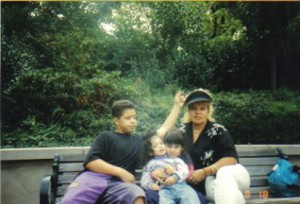PART 1
COVER 1
Publication date: 3/1/2013
Press published with: Faber and Faber
Location: United Kingdom
Any other identifiers: 50th Anniversary Edition
COVER 2
Turkish Cover
Publication date: 2009, 6th Edition
Press published with: Can Publishing
Location: Istanbul, Turkey
Translated by: Handan Sarac
The Bell Jar written by Sylvia Plath follows Esther Greenwood, the main character, who although is a striving young writer, finds herself spiraling downward into depression and eventually a suicide attempt.
There are many cover designs for the book that have appeared in many languages since 1963. The two covers I chose relates to many aspects of the novel. The 50th Anniversary Edition book cover published by Faber and Faber features a photograph of a young woman, powdering her face and looking into a mirrored make up compact. She does not look at the camera. We can see her face in profile and reflected back at us by the mirror.
I believe this book cover captures the essence of the protagonist’s dilemma perfectly. At the beginning of the book, The Bell Jar’s protagonist Esther Greenwood is working as a writer on a New York magazine; she and the other girls are given numerous freebies which include make up and lipsticks; they are living and working in an environment concerned with glamour and fashion. In the beginning of the story Esther says, “ I still have the makeup kit they game, fitted out for a person with brown eyes and brown hair, an oblong of brown mascara with a tiny brush, a round basin of blue eye-shadow just big enough to dab the tip of your finger in, and three lipsticks ranging from red to pink, all cased in the same little gilt box with a mirror on one side. I also have a white plastic sunglasses case with colored shells and sequins and a green plastic starfish sewed onto it.” Her reminiscing about the makeup kit she got years ago lets us know that she survived the story she’s about to tell us. Even though this cover doesn’t really shows the dark side of Esther’s life, it may be suggesting that even a “normal” looking woman, putting on make-up and trying to look good can experience mental health problems.
This cover also relates to one of the symbols Plath used over and over through the novel. The mirror! One of Esther’s problems is that she does not really know who she is. She has no firm sense of identity. It is noticeable how often she looks into a mirror, or sees a reflection of herself but does not recognize the image as herself. It shows us how Esther is increasingly withdrawing from herself, with her failure to identify with her reflection in a mirror.
For example, in the reflection in the elevator in New York, she remarks; “I noticed a big, smudgy-eyed Chinese woman staring idiotically into my face.” (pg. 18). Then, on the train going home, she said; “the face in the mirror looked like a sick Indian.” (pg. 113). Also when she first looks in a mirror in the hospital, after her suicide attempt, she is so disfigured that she does not recognize herself saying “It wasn’t a mirror at all, but a picture.” Another quote from the novel where we can see how Esther is not able to identify herself with her reflection in the mirror is when she said, “I moved in front of the medicine cabinet. If I looked in the mirror while I did it, it would be like watching somebody else, in a book or a play. But the person in the mirror was paralyzed and too stupid to do a thing” (pg. 147-148). What these examples suggest is that Esther’s feelings of inadequacy lead her into a dislike of her own appearance and a feeling that she is not really being herself. This is because her failure to recognize her own reflection stands for the difficulty she has of understanding herself.
The Turkish book cover published by Can Publishing in 2009 “Sirca Fanus”, meaning “The Bell Jar” in Turkish, features a portrait of a glamorous woman wearing lots of make up with a dull and emotionless expression in her face. With very short hair, the lifeless stare in her eyes and shape of her head reminds of a human cadaver head. In connection with the novel, the image of the cadaver head occurs on the first page of the novel. Esther says “I kept hearing about the Rosenbergs over the radio and at the office until I couldn’t get them out of my mind. It was like the first time I saw a cadaver. For weeks afterward, the cadaver’s head–or what there was left of it–floated up behind my eggs and bacon at breakfast. I felt as though I was carrying that cadaver’s head around with me on a string, like some black, noseless balloon stinking of vinegar.” In another words, her inability to get a cadaver’s head out of her mind points out to death.
Furthermore, the woman on the second book cover looks stiff, immobile and inhumane looking, just like how she felt about the cadavers. She said; “These cadavers were so unhuman-looking. They didn’t bother me a bit. They had stiff, leathery, purple black skin and they smelt like old pickle jars.” (p. 63).
Later in the novel, Esther is put into a mental institution and is given electroshock therapy. On the cover of the Turkish translated version of the novel, we can notice two white bandages on the sides of her head above her ears. This takes us back to Esther’s first experience with Electroshock therapy. She says “Doctor Gordon was fitting two metal plates on either side of my head. He buckled them into place with a strap that dented my forehead, and gave me a wire to bite”. (pg. 143). This shows us how her first experience with Electroshock therapy was horrifying to her.
Both covers may be making reference to societal pressures of the time. In the 50s and early 60s women’s behavior was governed by certain social mores and they were valued mainly with regard to looks rather than ability. Both covers demonstrate a woman wearing lots of make up. We can suggest that make up covers imperfections and the way make up is used in these covers can tell us that how Esther is trying look on the outside; perfect skin and bright colors. Since the entire book deals with appearance and reality I believe Esther’s outward appearance belies what is happening within. Excessive use of make up for example shows us Esther’s struggle to cover-up her imperfections in her own life. Both covers represent how Esther always struggles to keep the outward self she presents to the world united with the inner self that she experiences.
Also, the women’s face on both covers almost wears a sneer. On the 50th Anniversary cover, the woman sneers at herself and is reflected right back at us and on the Turkish edition cover, an upside down frown is lightly drawn on the sides of the woman’s lips. Both the half reflected image from the mirror and the sneer can demonstrate Esther’s inability to unify herself and the splitting of her selves and Esther’s breakdown where she got admitted to a mental institution. In the first book cover, she seems more comfortable with herself, calmly fixing her makeup, almost like getting ready for a night out. However on the second book cover, her makeup is done in a way of applying makeup on a corpse for viewing, overly done.
PART 2
.
I chose the above image to design my book cover. I wanted to focus on the two reoccurring themes in the novel. First theme is the bell jar and for Esther the bell jar symbolizes madness. She feels as if she is inside an airless jar that distorts her perspective on the world and keeps her alienated.
Second reoccurring theme is the fig tree. Early in the novel, Esther reads a story about a Jewish man and a nun who meet under a fig tree. Their relationship is unfortunate just as she feels her relationship with Buddy is unfortunate. For Esther, Buddy Willard is a symbol of her deflated expectations. Later in the novel, the tree becomes a symbol of the life choices that face Esther. She imagines that each fig represents a different life. She can only choose one fig, but because she wants all of them, she sits paralyzed with indecision and the figs fall to the ground. She says: “I saw myself sitting in the crotch of this fig tree, starving to death, just because I couldn’t make up my mind which of the figs I would choose. I wanted each and every one of them, but choosing one meant losing all the rest, and, as I sat there, unable to decide, the figs began to wrinkle and go black, and, one by one, they plopped to the ground at my feet.”(77). Her problem is that she has too many options, but no satisfying option that can conform to what is traditionally expected of her. Furthermore, Esther’s inability to make decisions about her future has to do with her negative perception of self and her belief that she is unqualified to make such a decision.
In the above image, the sapling (young fig tree) in the bell jar represents Esther who is still yet to grow and have all the expectations a young woman has. The sapling is trapped inside the bell jar, just like Esther feels. As the sapling grows, the bell jar will be too small for it. As it grows it needs bigger space, more soil, more water and nourishment. If the sampling stays trapped inside the bell it will not grow and eventually die. This can be a symbol of Esther being imprisoned within her own mind. Even her choices and her thoughts are stuck inside the bell jar because figs symbolized her choices and a sampling can’t produce figs unless it grows.
If you look closely the bell jar is almost in the shape of a woman’s shadow. Her head and shoulders are visible as if she is standing on top of the sampling. The darkness and the blur represent Esther’s mental breakdown and the way she sees her life through the bell jar.






